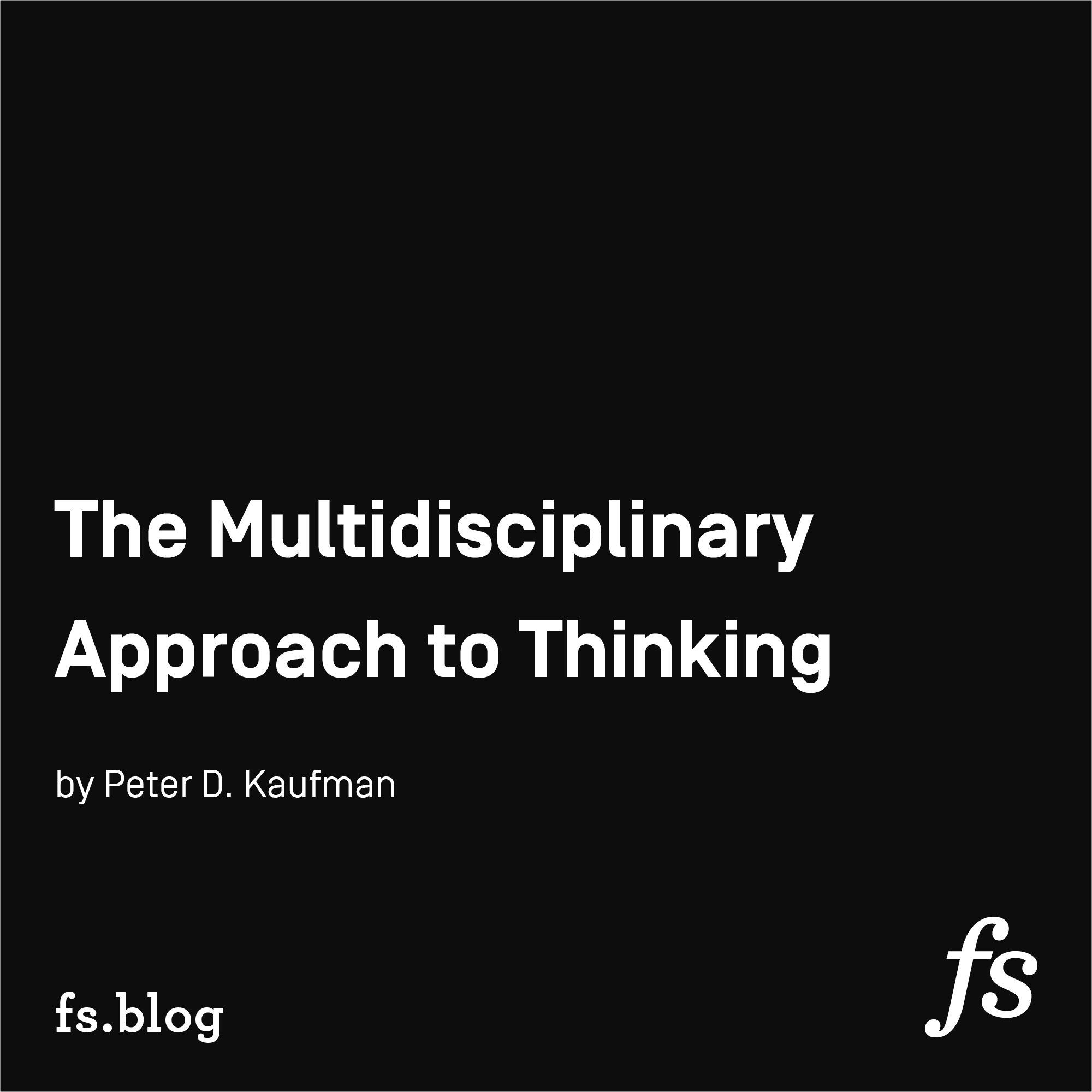- The Deep Dive
- Posts
- Multidisciplinary Thinking
Multidisciplinary Thinking
A thought experiment for your Monday!
Here is a thought experiment for you.
If you had to pull together a coaching group of five people from different professions, what professions would you choose?
What skill sets, ideas, and approaches are needed to achieve great coaching in your context?

Would any of a doctor, tradesperson, professor, airforce pilot, or firefighter be on your list?
Why ask this question?
Throughout Poor Charlie’s Almanack, a collection of talks given by former Vice-Chairman of Berkshire Hathaway (and Warren Buffett’s right-hand man) Charlie Munger, he credits the company’s success to what he calls a “multidisciplinary approach to thinking”. Under Buffett’s and Munger’s leadership, Berkshire Hathaway became one of America’s most valuable companies. Their approach was simple, yet powerful. When they had decisions to make or problems to solve (e.g., what companies to invest in, where to spend their money, where to cut their losses), they would run the decision through a latticework of key ideas and models taken from multiple disciplines (e.g., physics, economics, psychology, etc.).
Taking a multidisciplinary approach allows us to better understand and address the problems or decisions we face. As Rudyard Kipling wrote in his poem The English Flag,
What should they know of England, who only England know.
When we view our world through only one lens, we risk missing the broader context necessary for true understanding. Drawing from multiple fields gives us a wider range of perspectives and problem-solving strategies. Each discipline offers its own way of approaching challenges, and together they provide a more complete toolkit. We’re no longer limited to just a hammer—so not every problem has to look like a nail.
The beauty of a multidisciplinary approach is that you don’t need to be the smartest person in the room. What matters more is having curiosity, a willingness to engage with ideas beyond your own field, and the discipline to apply different mental models when faced with a problem. It’s not about knowing everything—it’s about knowing how to explore different ways of thinking.
Coming back to that question at the top — the five professions you landed on are a great starting point for creating your own multidisciplinary approach. Think about the key ideas or principles that guide those professions when they approach problems. Take a deep dive (pun intended) into how they think differently, and what tools or perspectives they bring.
PS: We’d love to see what you think your five are! Please send them through to [email protected] and Dave and I will send our lists through to you in return.
Peter Kaufman (CEO of Glenair, an aerospace company based in California, and the editor of Poor Charlie’s Almanack) gave a fantastic talk to the California Polytechnic State University Pomona Economics Club (say that 10 times fast!) on multidisciplinary thinking.
You’ll find both a transcript and audio version of the speech in the link.
Want to discuss anything you’ve read? Email us at [email protected]. We’d love to hear from you!
Want to share the Deep Dive with friends? Just send them the link below to subscribe

